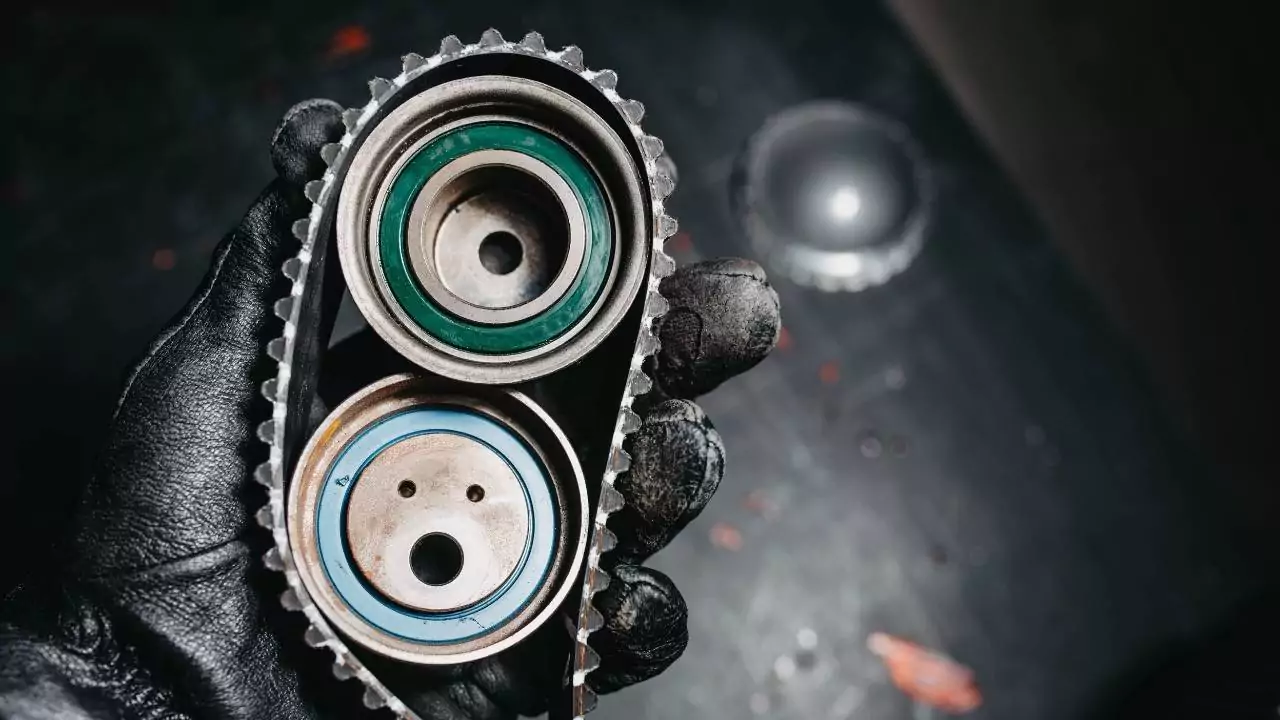No one wants to hear unusual noises coming from under the hood of their car, but all strange sounds should be investigated promptly. If you hear idler pulley noise, this is one situation you don’t want to ignore, or you will soon have bigger problems on your hands.
The pulleys hold various belts in position, so if one is failing, other parts of your car engine could be affected. I get to the root of your idler pulley noise so you can fix it fast. Let’s begin with a quick look at what causes it:
Symptoms of a Noisy Idler Pulley
One of the most common symptoms of a noisy idler pulley is a high-pitched squealing or whining noise coming from the engine bay. This noise is usually more noticeable when the engine is idling or during acceleration. The squealing sound is typically caused by the pulley bearings wearing out, leading to friction between the moving parts.
Another symptom to watch for is vibrations coming from the area around the tensioner pulley. These vibrations can be felt through the steering wheel or the vehicle’s chassis. They are often a sign that the pulley is not rotating smoothly due to worn-out bearings or misalignment.
If you notice unusual wear on the drive belt such as fraying, it could be an indication that the idler pulley is not functioning correctly. A misaligned or poorly functioning idler pulley can cause the belt to rub, leading to premature wear and potential belt failure.
Causes of Noisy Idler Pulleys

Here’s a more detailed list of the reasons why you hear idler pulley noise coming from your engine:
1. Worn Out Pulley
As you drive your vehicle, the idler pulley spins with the drive belt. Over time, this leads to wear and tear of the pulley from repeated use.
As it ages, the pulley can develop wear marks and scuffs on the surface. At first, this wear will only lead to minor noise, but it gradually gets worse and the pulley continues to endure stress.
2. Slipping Belt
If you ignore the signs of a worn-out pulley, the belt could eventually begin slipping. This condition occurs when the pulley becomes too worn.
The pulley starts to bind and rub along the engine belt. This contact creates squealing noises that only get worse until you replace the pulley. Additionally, a slipping belt can cause other components in the engine to go bad, leading to more costly repairs if not fixed promptly.
3. Damaged Pulley
If you continue to ignore the issues with the pulley, it is going to become severely damaged, causing it to break completely. The constant wear turns into cracks over time.
It will break a little bit at first, but will create a chain reaction you don’t want to deal with. In fact, a damaged pulley can cause the serpentine belt to tear as well.
When the serpentine belt breaks, you have bigger problems to deal with. The engine might stall or overheat as a result. Plus, the squealing noise is going to become consistently louder, creating an annoying ride.
Idler Pulley Location
The idler pulley and belt are located near the front of the engine. You will see the belt rotating in conjunction with the engine. You can find the idler pulley when you look at the serpentine belt moving on the engine.
The majority of vehicles will be equipped with one idler pulley, although some have more depending on the configuration. Tension to the idler pulley is set by its position on the rail-type mount that tightens it in place. However, there are some idler pulleys that use spring tension instead.
The Function of an Idler Pulley
Your car engine contains various drive belts or a serpentine belt that is responsible for running all of the accessories attached to it. Some of these accessories include the alternator, water pump, A/C compressor and power steering pump. However, these belts can easily interfere with other parts if they aren’t kept in their place.
The idler tensioner pulley guides all of the drive belts. It is needed to route the belts around all of the accessories. With an idler pulley, the belts are aligned properly for a smooth rotation, ensuring that the function of your vehicle operates as it should.
While the idler pulley tends to operate normally for a long time – even the life of the vehicle – it can wear out after many years of abuse. If the idler pulley becomes too damaged, it will lead to strange noises and cause other issues with the drive belts.
Idler Pulley Replacement Cost
The average idler pulley replacement cost is between $70 and $250, depending on the car model and labor cost. You can expect to pay $40 to $100 for the idler pulley and another $30 to $150 for the labor.
However, these prices will depend on the type of vehicle you drive, how easy it is to install, and the local labor rates. Additionally, taxes and fees charged by the auto repair shop can vary.
If you can replace the idler pulley yourself, it’s possible to save on the labor costs. Idler pulley replacement isn’t a difficult job and only requires basic tools.
While the replacement of an idler pulley isn’t an expensive job, it’s one that some people try to put off. This is a bad idea since this low-cost replacement could end up being something more severe if ignored. The engine drive belts rely on the idler pulley. If you postpone replacement, you are looking at other problems down the road.
You should always pay attention to the noises you hear coming from under the hood. You want to resolve the issues before the sounds get louder and worse. In fact, if you can get the idler pulley at the first sign of wear, you can avoid costly repairs later.